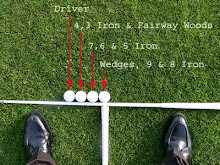If you are like most golfers, your plan for each hole is pretty much the same. You take out your driver, you hit the ball as far as you can, and then you come up with part two of your plan. But golf is no different than chess or billiards. The move you make now has a direct impact on the move you can make three turns from now. Follow these steps to make a plan for every hole and you may save strokes from your game immediately.
Look for easy shots - Birdies and eagles are great, but for most holes, par will do just fine. If you are playing a par four, map out the four easiest shots you can possibly take to make par and start from there. Try to leave heroic 220-yard iron shots over water out of the plan for now. Play your ball to safe parts of the fairway for the time being.
Work backwards - Instead of planning from the tee to the green, start your plan from the pin and work backwards. Where would you like to take an ideal approach shot to the pin? From that spot, trace back a realistic shot from the fairway. If you begin with the end in mind, you are less likely to get stuck with a difficult approach shot.
Take a close look at the course layout - Course designers can be devious when it comes to laying out a hole. They almost always reward the golfer who thinks before swinging. Does the fairway narrow anywhere? Is there a bunker waiting right around the distance you usually reach with your driver? Take the course design into consideration. If there's an obstacle that can devastate your score, stay away.
Control your ball - You have been conditioned to hit the ball as hard as you can, but when you do, it becomes much tougher to control your ball. Even if you can hit your driver 250 yards, it doesn't mean you can hit the ball in the air that full distance. Therefore, as your ball is rolling towards the 250-yard mark, it can find any obstacle along the way.
Consider the elements - How is the wind playing today? Is the course a little wet from some overnight rain? Your plan on how to attack a hole can change dramatically with a sudden shift in the weather. Before you power a drive through the wind or roll a ball off a wet fairway onto a green, consider how the elements will affect your shot.
Reference: PGATour.com
Subscribe to:
Post Comments (Atom)





No comments:
Post a Comment